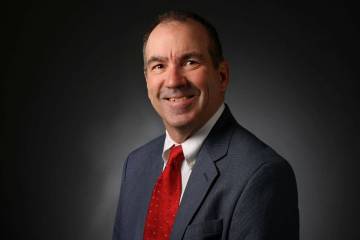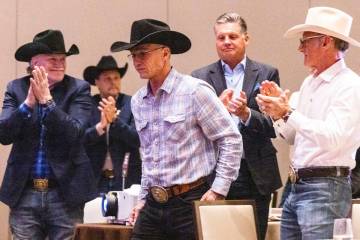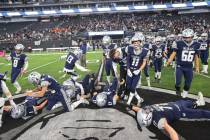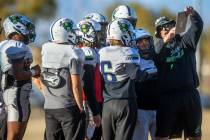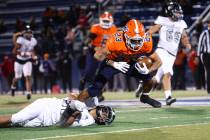Hoffman’s ‘Moneyball’ portrayal sticks out
I wonder how Art Howe feels about this.
That was one of the first things that popped into mind on Sunday when I read that Philip Seymour Hoffman was dead.
I thought about Farrah Fawcett, too. She died on the same day that Michael Jackson died, and so she probably didn’t receive her proper due, either.
Dying is a bad thing on any day. Dying on the same day that Michael Jackson dies almost is as unfortunate as dying on Super Bowl Sunday, at least when it comes to tributes and reaction and whatnot.
I also thought Philip Seymour Hoffman was a damn fine actor, at least based on the movies I have seen him in. I am sure I will see other good movies that would have been even better had he been in them.
I wish I would have thought about Philip Seymour Hoffman being a damn fine actor first.
But being a sports writer and a baseball guy sometimes skews one’s priorities. So when I saw the bulletin about Philip Seymour Hoffman, I immediately thought of Arthur Henry Howe.
Art Howe was the Oakland A’s manager that Philip Seymour Hoffman portrayed in 2011’s “Moneyball.” The movie was well received. The actor’s portrayal of the skipper not so much.
The movie was about Brad Pitt and Jonah Hill, when he still was pretty chubby, crunching obscure baseball statistics in the guise of A’s general manager Billy Beane and his nerdy assistant Paul DePodesta, and using these crunched statistics to transform the A’s into winners.
Beane and DePodesta, who was called Peter Brand in the movie, were the good guys. But you can’t have a movie without bad guys, and so Art Howe was cast as Lex Luthor or Bane or as Ed Rooney in “Ferris Bueller’s Day Off.”
A lot of baseball people who knew Art Howe and worked with him didn’t think that was fair.
Las Vegan Ken Korach, the A’s play-by-play broadcaster then and now, had a small part in the movie. His voice can be heard for 22 seconds during the A’s 20-game winning streak montage. Korach liked the movie; he did not like how Philip Seymour Hoffman portrayed Art Howe.
“I wish they had done a more flattering portrayal of Art … but it’s Hollywood,” Korach said when the movie came out. “They wanted to show conflict between Billy and Art.”
My earliest recollection of Art Howe was when he was playing second base for the Astros at Wrigley Field; I vividly remember him hustling down the line to prevent a double play. After he crossed first base, his helmet came off — probably because he was hustling so hard. And he was bald.
Not just a little bald. Nearly totally bald, like your uncle or your biology teacher; nothing on top, a sprig above each ear.
But while Art Howe was bald, he was fit, even as the A’s manager. When “Moneyball” came out, this is the first thing he said:
“First of all, Philip Seymour Hoffman physically didn’t resemble me in any way. He was a little on the heavy side.”
Then Howe went on to say the movie more or less made him look like a buffoon, like he had never heard about the importance of on-base percentage. He and Billy Beane did not see eye to eye on some things. Maybe even a lot of things. On-base percentage was not one of them.
Perhaps this wasn’t Philip Seymour Hoffman’s fault, because Philip Seymour Hoffman was one of the great actors of his generation. You saw “Capote,” right? So maybe it was the guy who wrote the script’s fault.
This is what I wrote when “Moneyball” hit the multiplexes: “Brad Pitt is fantastic as Billy Beane, Jonah Hill is fantastic as his sidekick Paul DePodesta … and Philip Seymour Hoffman is fantastic as Herman Franks.”
(Herman Franks was the manager of the Giants and the Cubs when I collected baseball cards. He was a tad on the portly side.)
They’re saying that Philip Seymour Hoffman died as a result of a drug overdose, that the authorities found him dead on the floor with a needle in his arm. One of those Sonny Liston deals.
A lot of people, after the Super Bowl was over, were quick to judge him on that — and only on that.
I don’t believe that is any more than fair than Hollywood making Art Howe out to be a buffoon who did not appreciate the value of on-base percentage.
From what I have read, Max Baer wasn’t the merciless thug that he was made out to be in “Cinderella Man” either. But I have seen the Iron Man movies, and I have read the comic books, and I have to say that Robert Downey Jr., pretty much nailed Tony Stark.
These are some of the things that popped into mind when I read that Philip Seymour Hoffman was dead. It’s funny how the mind works sometimes when an icon meets his demise.
Las Review-Journal sports columnist Ron Kantowski can be reached at rkantowski@reviewjournal.com or 702-383-0352. Follow him on Twitter: @ronkantowski




